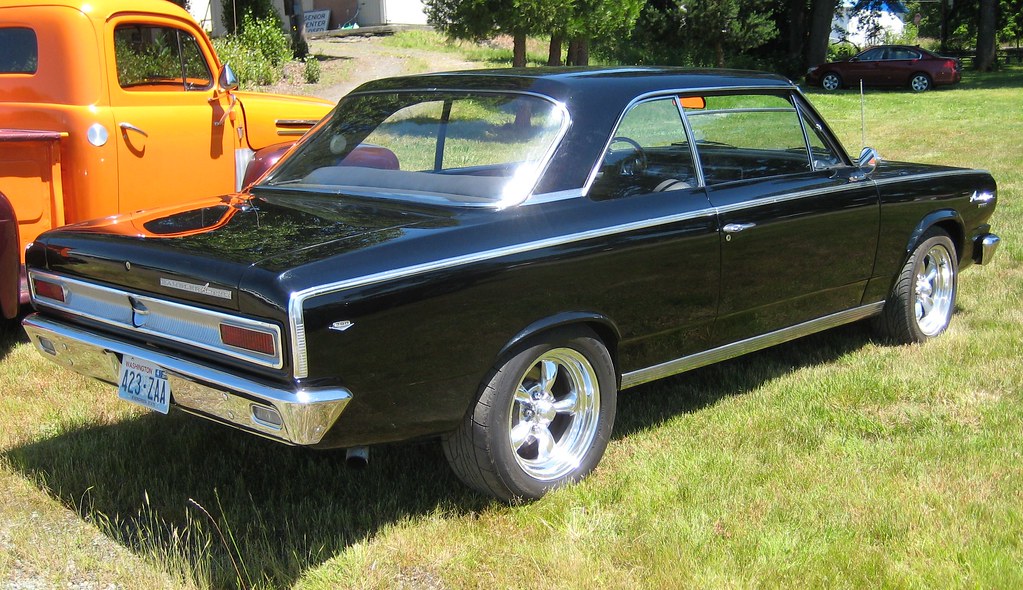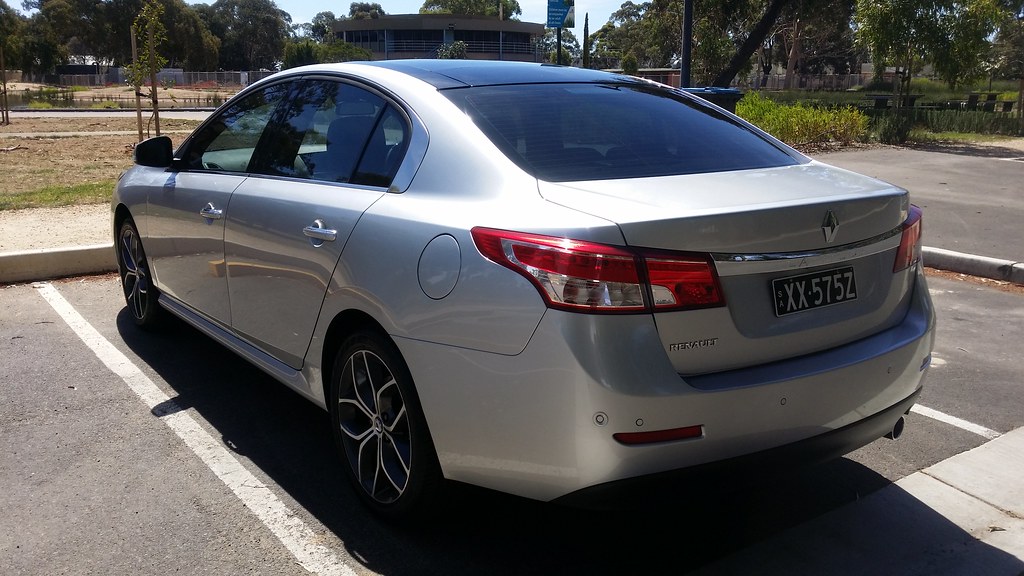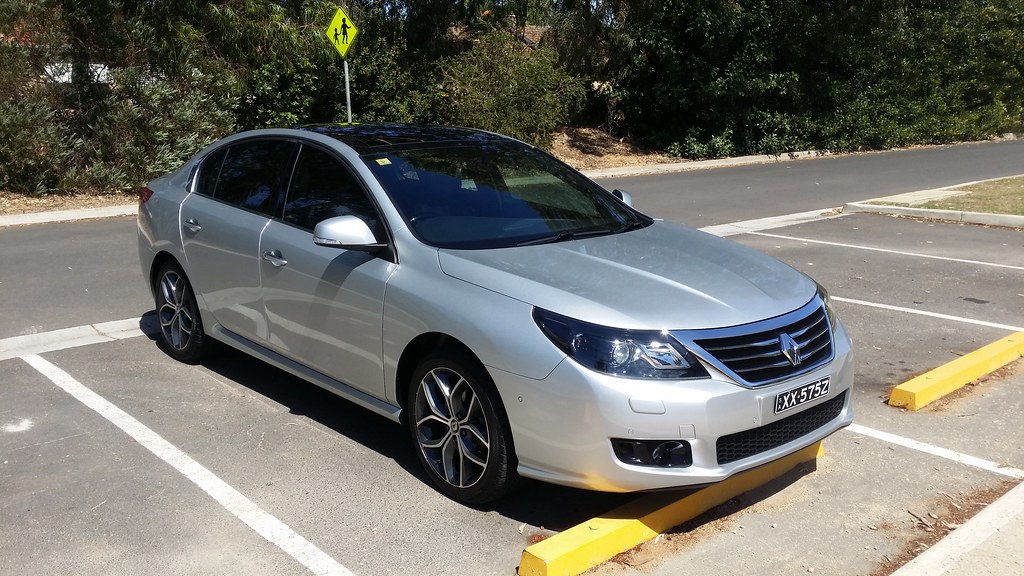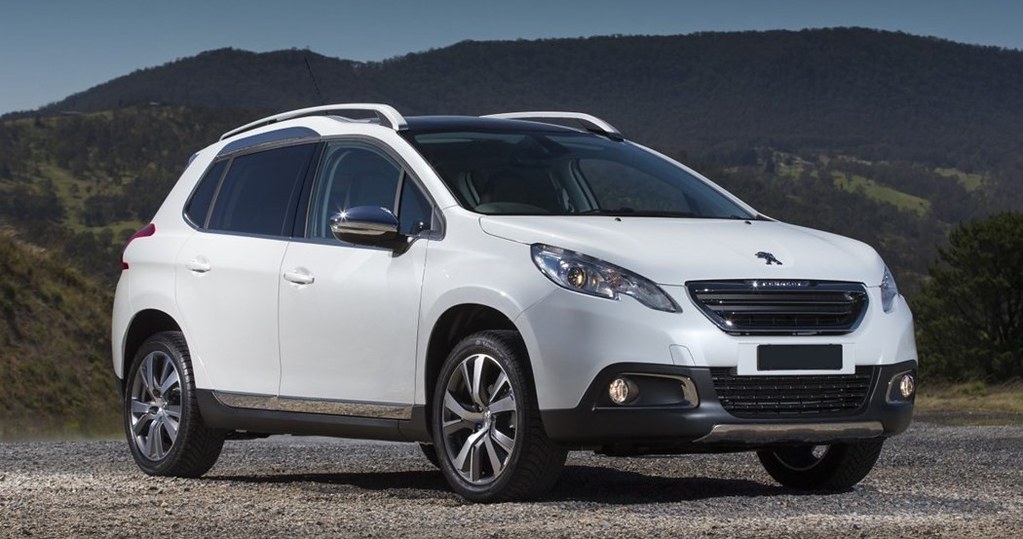
Vehicle inspections and emissions testing represent an essential aspect of responsible vehicle ownership across the United States. These regulatory measures are primarily designed to ensure that automobiles operating on public roads meet fundamental safety benchmarks and adhere to established environmental standards. While the overarching goal remains consistent—to promote safer roads and cleaner air—the specific mandates, frequencies, and types of tests can vary dramatically from one state to another, creating a complex landscape for drivers to navigate.
Understanding these state-specific requirements is not merely a matter of compliance; it’s crucial for avoiding potential fines, ensuring uninterrupted vehicle registration, and ultimately maintaining your car in optimal condition. Drivers, whether purchasing a used car, moving to a new state, or simply ensuring their current vehicle remains roadworthy, must stay informed about the regulations that apply to their specific location and vehicle type. The distinctions between safety inspections, which focus on mechanical integrity, and emissions tests, which target exhaust pollutants, are particularly important to grasp.
This in-depth analysis aims to provide a clear, data-driven overview of the U.S. states that impose the most significant burdens in terms of vehicle inspection and emissions testing. By highlighting those states with comprehensive, frequent, or particularly stringent requirements, we offer a practical guide for vehicle owners. Our exploration delves into the specifics of these mandates, comparing protocols and examining the implications for drivers nationwide, helping them prepare for what lies ahead on the road.

1. **California: The Forefront of Emissions Scrutiny**California is widely recognized for enforcing some of the nation’s most stringent smog check requirements, a commitment rooted in its continuous efforts to improve air quality. The state’s regulations are not static; they are regularly updated to meet evolving environmental goals, placing a significant emphasis on reducing vehicle-related air pollution. This aggressive stance means that vehicle owners in California must adhere to a rigorous testing schedule and strict performance criteria to maintain compliance.
Vehicle owners in 41 of California’s 58 counties are typically subject to biennial emissions inspections. This requirement applies to out-of-state cars seeking registration in California and in-state vehicles that are seven years old or older. The specific testing protocols are meticulous, assessing the vehicle’s exhaust system to ensure it meets the state’s stringent emissions limits. Furthermore, the California Air Resources Board (CARB) often leads the way in setting national benchmarks for clean vehicle technologies and emissions control.
One of the most notable aspects of California’s system is the consequence of failing a smog test. If a vehicle does not pass, repairs must be made before it can be registered or re-registered. These repairs often need to be performed at a certified state test and repair (STAR) station, ensuring that the necessary fixes are conducted to state specifications. This can sometimes lead to considerable expenses for vehicle owners, especially if major emission control components are malfunctioning.
However, California’s system also includes several exemptions. Electric vehicles, for instance, are always exempt from smog tests because they produce no tailpipe emissions. Motorcycles, natural gas-powered vehicles over 14,000 pounds, diesel-powered vehicles made before 1997, and any vehicle manufactured before 1975 are also typically exempt. Additionally, drivers of newer vehicles, specifically those less than eight years old, can often pay a smog abatement fee instead of undergoing an inspection for their initial registration period, though this provides only temporary relief from the testing regime.
In essence, California’s framework for vehicle emissions testing is a comprehensive and demanding system designed to protect public health and the environment. While it places significant responsibility on vehicle owners to maintain their cars to high standards, it also reflects a pioneering approach to air quality management. The state’s commitment to consistently updating its standards means drivers must remain vigilant and proactive in their vehicle maintenance to ensure ongoing compliance.

2. **Massachusetts: A Comprehensive Annual Check-Up**Massachusetts operates a mandatory program known as the Massachusetts Vehicle Check, which requires all passenger vehicles to undergo an annual safety inspection and emissions test. This comprehensive approach underscores the state’s dual commitment to ensuring vehicles are both safe for operation on public roads and environmentally responsible. The annual nature of these inspections means that vehicle owners must regularly demonstrate their car’s compliance.
The safety component of the inspection is thorough, examining a range of critical vehicle systems and components. Inspectors meticulously check the car’s braking system, ensuring proper function and wear within acceptable limits. Tires are also carefully assessed for tread depth, damage, and proper inflation, as these are direct contributors to vehicle control and road grip. Beyond these, the horn, headlights, turn signals, and other essential safety features are scrutinized to guarantee they are in good working order, making sure the vehicle is visible and can communicate effectively with other road users.
For emissions, the program focuses on vehicles less than 15 years old that are equipped with onboard diagnostic (OBD-II) systems. This advanced testing method allows inspectors to connect directly to the vehicle’s computer, retrieving data on its emission control performance. The OBD-II system monitors various engine parameters and components that affect emissions, providing an efficient and accurate assessment of environmental compliance. If any issues are detected, they trigger specific trouble codes that technicians can use for diagnosis and repair.
If a vehicle fails either the safety or emissions portion of the annual inspection, the owner is typically given a grace period to address the identified issues and undergo a re-inspection. The requirement for a comprehensive safety check in conjunction with an emissions test positions Massachusetts among the states with higher inspection burdens. The annual frequency further emphasizes the importance of continuous vehicle maintenance, as drivers must consistently meet these standards year after year, reinforcing the state’s robust approach to both road safety and environmental protection.

3. **New York: The Empire State’s Extensive Oversight**New York State has implemented a comprehensive inspection program that mandates annual checks for both cars and light trucks. This approach ensures that vehicles registered in the Empire State consistently meet critical safety and environmental standards. The annual frequency of these inspections places New York among the states with a notable regulatory presence in vehicle maintenance.
At the core of New York’s program is the annual safety check, which delves into a vehicle’s fundamental operational components. Inspectors meticulously examine crucial elements such as the horn, ensuring it is audible and functional for warning purposes. Windshield wipers are tested for their effectiveness in maintaining clear visibility during adverse weather conditions. The braking system undergoes a thorough assessment to guarantee reliable stopping power, a critical safety feature. Furthermore, headlights, turn signals, and other exterior lighting are checked to ensure proper illumination and communication with other drivers on the road. This thorough safety evaluation is designed to identify and rectify any mechanical issues that could compromise vehicle operation or lead to accidents.
Alongside the safety inspection, New York requires an annual OBD II (On-Board Diagnostics II) emissions inspection for applicable non-diesel and non-electric vehicles built since 1996. This test represents a computerized analysis of the automobile’s emissions control systems. The OBD II system continuously monitors various components responsible for regulating exhaust emissions. During the inspection, a diagnostic scanner is connected to the vehicle’s computer, which then reports any malfunctions or issues related to pollution control. For light-duty diesel vehicles newer than 25 years, an OBD II test is also mandated under the NYVIP3 program, demonstrating the state’s commitment to clean air across different vehicle types.
New York’s program is designed to integrate both safety and environmental compliance seamlessly, providing a holistic assessment of a vehicle’s condition. The requirement for annual checks means that drivers must regularly ensure their vehicles are well-maintained and free from defects that could affect either safety or air quality. This rigorous approach underscores the state’s commitment to public safety and its proactive stance on environmental protection, making it one of the more demanding states for vehicle owners to navigate in terms of regulatory compliance.

4. **Vermont: Annual Vigilance for Safety and Emissions**Vermont maintains a robust annual emissions inspection and maintenance program that ensures vehicles operating within its borders meet strict safety and environmental benchmarks. This consistent regulatory framework positions Vermont as a state with significant requirements for vehicle owners. The annual nature of both the safety and emissions checks means that drivers must commit to regular vehicle upkeep to remain compliant.
The state’s program mandates that residents visit one of its extensive network of 1,100 official inspection stations located throughout Vermont. These stations are equipped to conduct both the emissions test and the safety check, providing a convenient and standardized process for vehicle owners. The fact that the state has such a widespread infrastructure for inspections underscores its commitment to enforcing these regulations effectively and accessibly.
During the safety inspection component, a comprehensive review of critical vehicle systems is performed. This includes, but is not limited to, checks on the braking system, steering components, suspension, tires, and all lighting. The goal is to identify any mechanical defects or wear that could compromise the vehicle’s safe operation. Ensuring that these components are in proper working order is paramount to preventing accidents and ensuring overall roadworthiness, thereby protecting both the vehicle occupants and other road users.
For the emissions segment, all cars 16 years old or newer must undergo testing. This ensures that a vast majority of the vehicles on Vermont’s roads are regularly assessed for their environmental impact. The emissions test evaluates the levels of pollutants emitted by the vehicle’s exhaust system, confirming compliance with state and federal air quality standards. By targeting a wide range of newer vehicles, Vermont aims to proactively reduce air pollution and maintain environmental health across the state. This combined annual inspection program signifies a strong dedication to vehicle integrity and environmental stewardship, placing a consistent responsibility on vehicle owners.

5. **Pennsylvania: Balancing Statewide Safety with Regional Emissions**Pennsylvania implements a dual system for vehicle inspections, requiring a basic annual safety inspection statewide while also mandating annual emissions inspections for vehicles registered in specific metropolitan counties. This structured approach ensures a baseline level of safety for all vehicles while targeting air quality improvements in densely populated areas that are more susceptible to vehicle emissions impact.
The statewide annual safety inspection is comprehensive, covering a broad array of essential vehicle components. Inspectors carefully examine the car’s horn, ensuring its functionality for warning purposes, and check the windshield wipers for effectiveness in maintaining clear visibility. The braking system undergoes a thorough assessment, as do other critical elements such as the steering, suspension, tires, and lighting. A key aspect of Pennsylvania’s safety check is the requirement that significant rust and frame damage must be repaired before an inspection sticker can be issued. This strict criterion aims to remove structurally compromised vehicles from the road, enhancing overall public safety.
For emissions testing, the requirement applies to motorists in 25 of Pennsylvania’s 67 counties, primarily those located in metropolitan areas. These annual emissions inspections are crucial for managing air quality in regions where vehicle density and industrial activity can contribute significantly to pollution levels. The tests evaluate a vehicle’s exhaust output against specific environmental standards, ensuring that emission control systems are functioning correctly. Vehicles failing these tests must undergo necessary repairs before they can pass and be legally registered.
Pennsylvania’s model reflects a practical balance: universal safety standards for all drivers, complemented by targeted environmental regulations where they are most needed. The annual frequency of both types of inspections means that vehicle owners, particularly those in emission-testing counties, face regular obligations to ensure their vehicles are in excellent mechanical and environmental condition. This dual system underscores Pennsylvania’s commitment to maintaining both road safety and regional air quality, requiring consistent diligence from its driving population.
Read more about: Beyond the Sticker Price: Unpacking the Steep Rise in Car Registration Fees Across the U.S.

6. **Virginia: Annual Safety with Strategic Emissions Testing**Virginia maintains a robust vehicle inspection framework that includes an annual statewide safety inspection, complemented by biennial emissions testing in its most populated Northern Virginia areas. This systematic approach ensures a consistent level of roadworthiness across the state while focusing environmental efforts on regions with higher population density and traffic volume. The combination of annual safety and regular emissions checks places a steady responsibility on vehicle owners.
The annual vehicle safety inspection is a mandatory requirement for all vehicles registered in Virginia. During this comprehensive check, licensed inspectors meticulously examine various critical components to ensure they are in proper working order. This includes assessing the braking system for effectiveness, verifying the functionality of all lights (headlights, tail lights, turn signals), checking the condition and tread depth of tires, inspecting steering mechanisms for responsiveness, and confirming the integrity of the suspension system. The goal of this annual inspection is to identify any potential equipment or mechanical failures that could compromise the safety of the vehicle’s occupants or other road users, ensuring that only roadworthy vehicles operate on Virginia’s highways.
In addition to the statewide safety mandates, vehicles in the most populated urban and suburban areas of Northern Virginia are subject to biennial emissions testing. This targeted approach to emissions control is designed to mitigate air pollution in regions where traffic congestion and vehicle density are highest. The emissions test ensures that vehicles meet specific environmental standards, checking that their exhaust systems are operating effectively to reduce harmful pollutants.
Virginia has also embraced technological innovation to make emissions testing more convenient for motorists in Northern Virginia through its Rapidpass system. This on-road emissions inspection program allows drivers to complete their emissions test without having to stop at a traditional testing station. Motorists can simply drive through a roadside testing site where advanced equipment uses ultraviolet and infrared light beams to analyze the air quality of the passing car, with cameras capturing vehicle information. If the vehicle passes, owners can pay a fee online and proceed with registration. This efficiency-focused system demonstrates Virginia’s commitment to environmental compliance while minimizing the inconvenience for its citizens, although the requirement for testing remains a consistent feature for drivers in designated areas.

7. **New Hampshire: All-Encompassing Annual Checks**New Hampshire enforces an annual vehicle inspection program that combines a mandatory safety check for all registered automobiles with an annual onboard diagnostics (OBD) test for emissions on newer vehicles. This comprehensive approach underscores the state’s commitment to maintaining both vehicle safety and environmental compliance across its diverse fleet. The annual frequency of these inspections means that vehicle owners face a consistent responsibility to keep their cars in optimal condition.
Every automobile registered in New Hampshire must undergo an annual safety check as a fundamental part of the state’s vehicle inspection program. This inspection is thorough, evaluating critical components that directly impact a vehicle’s safe operation. Inspectors carefully examine the braking system, including pads, rotors, and fluid levels, to ensure reliable stopping power. They assess the condition and inflation of tires, check the functionality of all lights (headlights, tail lights, turn signals, brake lights), and inspect the steering and suspension systems for any wear or damage that could affect handling. This annual safety inspection is paramount for identifying potential hazards and ensuring that vehicles are roadworthy, thereby contributing to the safety of all road users.
In addition to the physical safety inspection, passenger vehicles less than 20 years old are required to undergo an annual onboard diagnostics (OBD) test for emissions. This modern testing method connects to the vehicle’s computer system to detect any malfunctioning emissions devices. The OBD system continuously monitors various components of the emission control system, and if a fault is detected, it stores a diagnostic trouble code. During the inspection, this data is retrieved to confirm that the vehicle’s pollution control systems are functioning correctly, helping to reduce harmful exhaust emissions.
The integration of both safety and emissions checks into an annual program positions New Hampshire among the states with stringent requirements for vehicle owners. The OBD test’s focus on early detection of malfunctioning emissions devices highlights a proactive approach to environmental protection. By ensuring that a wide range of vehicles are consistently checked for both mechanical integrity and environmental performance, New Hampshire demonstrates a strong commitment to maintaining high standards for its driving population. This regular oversight helps to keep the state’s roads safer and its air cleaner, placing an ongoing obligation on vehicle owners to prioritize maintenance.

8. **Connecticut: Targeted Emissions, Selective Safety**Connecticut mandates biennial emissions testing for all registered passenger vehicles, reflecting a consistent commitment to air quality control. This program ensures that vehicles on its roads meet specific environmental standards every two years, primarily through an onboard diagnostics (OBD) check for modern models. The test confirms pollution control components function effectively, upholding the state’s environmental objectives.
However, Connecticut notably diverges from many states by not requiring periodic safety inspections for regular passenger cars, pickup trucks, or motorcycles. This approach, while reducing a recurring burden on most drivers, places the primary responsibility on owners to independently ensure their vehicles remain roadworthy and safe. Without regular state-mandated safety checks, continuous personal vigilance in maintenance is crucial.
Despite the absence of recurring passenger vehicle safety inspections, commercial vehicles are subject to safety checks, acknowledging their distinct public safety implications. Additionally, any out-of-state vehicle registering in Connecticut for the first time must undergo a Vehicle Identification Number (VIN) verification. This administrative step is essential for confirming ownership and identity before legal operation within the state.
Connecticut’s framework prioritizes environmental compliance for its general vehicle fleet through biennial emissions testing. The selective nature of its safety inspections for passenger vehicles means drivers must be proactive in their maintenance. This balanced approach highlights the state’s focus on managing air quality while offering a streamlined regulatory process for most drivers regarding safety components.

9. **Delaware: Integrated Biennial Safety and Emissions**Delaware’s inspection program mandates both safety and emissions checks every two years for light-duty automobiles and trucks, specifically those with a gross vehicle weight rating of 8,500 pounds or less. This integrated approach ensures consistent evaluation of both mechanical integrity and environmental impact, offering a holistic assessment of vehicle condition without an annual burden.
A unique aspect of Delaware’s system is that these mandatory tests are exclusively conducted by the Department of Motor Vehicles (DMV), rather than independent authorized garages. This centralization ensures standardized testing and consistent application of regulations statewide. Drivers must visit a DMV facility, which streamlines the administrative process, though scheduling flexibility may vary.
The program also features specific exemption policies. Vehicles manufactured before 1968, and diesel vehicles produced before 1997, are exempt. Furthermore, new passenger vehicles enjoy an initial exemption from inspections for their first five model years, subsequently entering the standard biennial testing cycle. These policies balance regulatory oversight with considerations for classic and new vehicles.
Delaware’s comprehensive biennial safety and emissions inspections, coupled with its direct DMV oversight and clear exemption rules, establish a structured compliance framework. This system aims to consistently uphold road safety and environmental standards. For vehicle owners, understanding these unique administrative procedures and exemption criteria is key to maintaining proper registration and avoiding compliance issues.
Read more about: Navigating the Bureaucratic Backroads: A MotorTrend Guide to the Most Challenging States for Classic Car Registration and Inspection Laws

10. **District of Columbia: Urban Emissions Control with Modern Convenience**The District of Columbia mandates biennial emissions testing for most vehicles as a prerequisite for registration. This requirement is central to the District’s strategy for managing air quality in a dense urban setting, where vehicle emissions significantly impact public health. The focus ensures vehicles comply with established environmental standards, contributing to cleaner city air.
New passenger vehicles receive a notable administrative advantage: upon initial registration with a manufacturer’s Certificate of Origin, they are automatically issued a 4-year new car inspection sticker. This extended exemption eases the immediate burden on new vehicle owners, acknowledging that newer cars typically feature more efficient and less polluting emission control systems from the factory.
A key innovation for emissions testing in the District is the provision of 24/7 self-service kiosks. These facilities significantly enhance convenience for owners of previously inspected vehicles, allowing them to complete their biennial emissions checks outside traditional hours. This modern approach aims to reduce wait times and offer maximum flexibility, reflecting an understanding of urban life’s demands.
While motorcycles and motorized bicycles are now exempt from inspections, other applicable vehicles must be checked, with personal car inspections valid for two years. This focused emissions testing, supported by modern conveniences and targeted exemptions, demonstrates the District’s commitment to maintaining urban air quality. Residents must stay informed and utilize available options for seamless vehicle registration.
Read more about: Maximizing Your EV Savings in 2025: A State-by-State Guide to the 14 Best Incentives and Rebates

11. **Illinois: Regional Emissions Focus in Metropolitan Hubs**Illinois implements a biennial emissions inspection program specifically targeting qualifying vehicles within its major metropolitan areas of Chicago and East St. Louis. This regionalized approach acknowledges that high vehicle density in these urban centers disproportionately contributes to air pollution. These emissions tests are a prerequisite for residents to renew their vehicle registration.
The state’s emissions requirements generally apply to cars older than four years, establishing an age-based criterion for testing eligibility. Newer vehicles, typically within their first four model years, are often exempt, as they are presumed to have efficient and compliant emission control systems. This policy helps direct inspection resources to vehicles more likely to require environmental compliance checks.
The Illinois Environmental Protection Agency (EPA) administers these emissions tests, ensuring consistent application of protocols and standards. This governmental oversight reinforces the program’s objective nature, directly linking a passing emissions test to legal vehicle registration renewal. Failure necessitates repairs to bring the vehicle into compliance before registration can be finalized.
Illinois’s model effectively concentrates efforts on environmental improvements in specific high-impact regions. By linking emissions testing to registration renewal and employing clear age-based exemptions, the state efficiently addresses urban air quality challenges. Vehicle owners in designated metropolitan areas must adhere to the biennial schedule and ensure their cars meet emissions standards to maintain proper registration status.

12. **Maryland: Biennial Emissions with Point-of-Sale Safety**Maryland mandates a biennial emissions testing program for vehicles registered in 13 specific counties and the city of Baltimore. This targeted strategy addresses areas with identified air quality concerns, reflecting a strategic allocation of environmental regulatory resources. The biennial frequency ensures regular oversight of vehicle emissions without imposing an annual burden in these designated regions.
A distinct administrative process in Maryland also requires a comprehensive vehicle safety inspection, primarily for most used vehicles *before* their sale or title transfer. This means recurring annual or biennial safety inspections are not mandatory for already registered vehicles, but a thorough examination is required when ownership changes. This point-of-sale ensures vehicles entering a new cycle meet fundamental safety standards.
When required, the safety inspection must be conducted at a licensed vehicle safety inspection station by certified professionals, adhering to state standards. This one-time, comprehensive assessment covers critical components like brakes, tires, lights, steering, and suspension, aiming to identify and rectify any mechanical issues compromising safety. This program safeguards transactions and public safety.
Maryland’s dual system blends ongoing environmental compliance and episodic safety assurance. Biennial emissions tests in specific counties address regional air quality, while point-of-sale safety inspections for used vehicles provide a practical mechanism for maintaining roadworthiness. Vehicle owners, especially in emission-testing counties or involved in transactions, must understand these distinct requirements for compliance.

13. **North Carolina: Dual Annual Mandates for Safety and Emissions**North Carolina enforces a comprehensive vehicle inspection program featuring both annual safety inspections for passenger vehicles under 30 years old and annual emissions inspections for motorists in 19 specific counties. This dual annual requirement establishes rigorous oversight, demonstrating a strong commitment to both road safety and regional air quality.
The statewide annual safety inspection is a mandatory prerequisite for vehicle registration or renewal. Licensed mechanics meticulously examine critical components, including headlights, turn signals, brake lights, the braking system, steering mechanisms, window operation, and tire tread depth. This thorough evaluation identifies and rectifies mechanical issues that could compromise vehicle operation or lead to accidents.
In conjunction with the safety check, drivers in 19 designated North Carolina counties are subject to an annual On-Board Diagnostics (OBD) emissions inspection. These counties are typically metropolitan or those with identified air quality concerns. The OBD test electronically evaluates the vehicle’s emission control systems, ensuring they function correctly to minimize harmful exhaust pollutants.
North Carolina’s system demands consistent diligence from vehicle owners, who must ensure their cars meet both safety and environmental standards every year. These dual annual mandates underscore the state’s proactive stance on preventing unsafe vehicles and excessive air pollution. For residents in emission-testing counties, a regular commitment to vehicle maintenance and compliance is essential for uninterrupted registration.
Read more about: Unlocking the Road Ahead: The 14 Top States for Classic Car Registration and Unbeatable Low Annual Fees

14. **Rhode Island: Biennial Comprehensive Inspections**Rhode Island conducts vehicle inspections every two years through its combined emissions and safety testing program. This program is designed to ensure that automobiles on its roadways are both safe and environmentally sound. The biennial frequency balances regular oversight with minimizing the burden on vehicle owners, consistently meeting standards for mechanical integrity and environmental compliance.
The state’s program is notably comprehensive, encompassing a thorough check of both exhaust output and the car’s major components. For safety, inspectors meticulously examine critical elements such as the braking system, ensuring reliable stopping power. The suspension system is assessed for wear or damage affecting handling and stability, while tires are scrutinized for tread depth, damage, and proper inflation—all vital for vehicle control.
Concurrently, the emissions component evaluates the vehicle’s exhaust system to confirm pollutant levels comply with state and federal environmental standards. This testing helps mitigate air pollution and contributes to public health by ensuring emission control devices function as intended. Integrating safety and emissions into a single biennial inspection provides a holistic evaluation of a vehicle’s overall condition.
Rhode Island’s commitment to these comprehensive biennial inspections highlights its dedication to maintaining high standards for its vehicle fleet. This structured approach, covering fundamental safety aspects and environmental performance, provides a practical framework for vehicle owners to ensure compliance. For drivers, understanding the breadth of these inspections is key to preparing their vehicles for the mandated checks every two years.

15. **Texas: A Shifting Landscape of Safety, Enduring Emissions**Texas recently enacted a significant policy change, effective January 1, 2025, by eliminating the requirement for annual passenger vehicle safety inspections for most private automobiles. This statewide change marks a substantial departure from prior regulations, considerably reducing a recurring burden for the majority of vehicle owners. However, safety inspections will still be mandated for specific categories, including commercial vehicles, salvage-title vehicles, and those operated by teen drivers, maintaining targeted safety oversight.
Despite this discontinuation of statewide safety checks, Texas retains a robust annual emissions testing policy, which remains applicable to vehicles in 17 specific counties. These designated regions are primarily concentrated within large urban metropolitan areas, such as Houston, Dallas, Austin, and El Paso. In these high-density zones, vehicle emissions significantly influence regional air quality, making environmental protection a persistent priority for state regulators.
The emissions requirement is specifically geared towards gasoline-powered vehicles that are less than 25 years old. This age-based criterion focuses regulatory efforts on the segment of the fleet most relevant to current air quality concerns, while simultaneously exempting older, classic vehicles. Further demonstrating an evolving commitment to regional air quality, the emissions testing footprint in Texas is set to expand, with Bexar County, encompassing part of the San Antonio metropolitan area, scheduled to implement these tests starting in 2026.
Texas’s dynamic regulatory landscape underscores a complex interplay between administrative efficiency, public safety considerations, and crucial environmental mandates. While the broad removal of safety inspections streamlines processes for many, the enduring and expanding emissions testing in urban areas signifies a persistent focus on air quality. Vehicle owners, especially those in or commuting to designated urban counties, must stay keenly aware of these specific and evolving requirements to ensure continuous compliance and avoid potential penalties.
**Concluding Thoughts on Navigating State Vehicle Inspection Requirements**
As this comprehensive review of U.S. states requiring vehicle inspections and emissions testing clearly demonstrates, the regulatory landscape is anything but uniform. From states with rigorous annual mandates encompassing both safety and emissions, to those with targeted regional programs, or even minimal to no recurring checks, the diversity of requirements is substantial. This intricate tapestry of regulations reflects varying priorities, environmental challenges, and administrative philosophies across the nation.
Read more about: Jalopnik’s Ultimate Warning: 14 Trucks That Will Leave You Stranded (And Broke) On The Side Of The Road
For vehicle owners, navigating these state-specific rules is not merely about avoiding fines; it’s also about ensuring road safety, contributing to cleaner air, and extending their vehicle’s longevity. Whether purchasing a new car, relocating, or simply maintaining their current ride, understanding local mandates for safety and emissions is paramount. This guide serves as a crucial resource in deciphering the complexities of state-level oversight, empowering drivers to stay compliant and prepared. The ongoing evolution of policies, as seen with changes in states like Texas, further emphasizes the critical need for drivers to stay informed and proactive in their vehicle maintenance journey.


